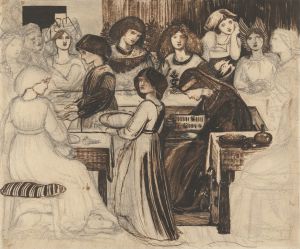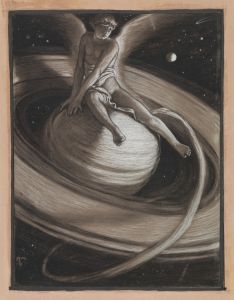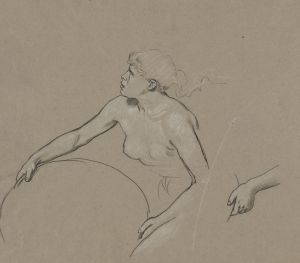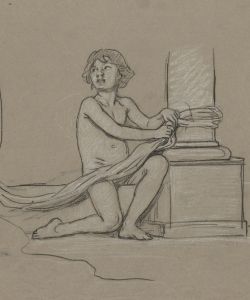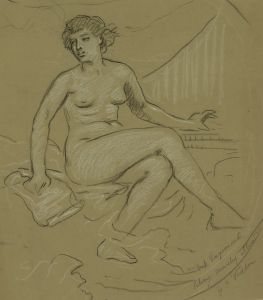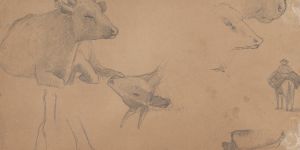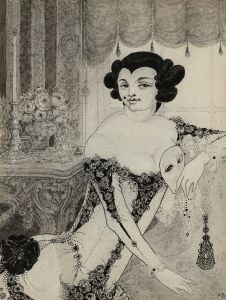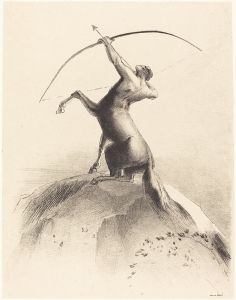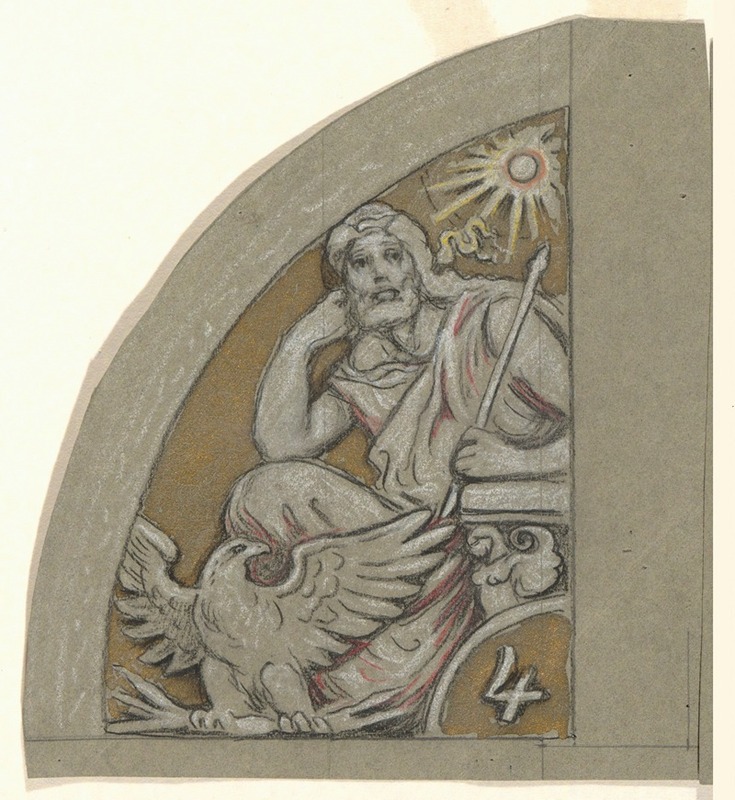
Study for Jupiter
A hand-painted replica of Elihu Vedder’s masterpiece Study for Jupiter, meticulously crafted by professional artists to capture the true essence of the original. Each piece is created with museum-quality canvas and rare mineral pigments, carefully painted by experienced artists with delicate brushstrokes and rich, layered colors to perfectly recreate the texture of the original artwork. Unlike machine-printed reproductions, this hand-painted version brings the painting to life, infused with the artist’s emotions and skill in every stroke. Whether for personal collection or home decoration, it instantly elevates the artistic atmosphere of any space.
Elihu Vedder, an American symbolist painter, created "Study for Jupiter" as part of his exploration of mythological and allegorical themes. Vedder, born in 1836, was known for his unique style that combined elements of symbolism and mysticism, often drawing inspiration from classical mythology and literature. His works frequently depicted ethereal and otherworldly subjects, reflecting his interest in the spiritual and the metaphysical.
"Study for Jupiter" is a preparatory work that showcases Vedder's process in developing his larger compositions. While specific details about this particular study are limited, it is consistent with Vedder's broader body of work, which often involved detailed sketches and studies that informed his final paintings. These studies were crucial for Vedder as he meticulously planned the composition, form, and symbolism of his pieces.
Vedder's interest in Jupiter, the Roman king of the gods, aligns with his fascination with powerful mythological figures and their symbolic meanings. Jupiter, known for his authority and control over the heavens, was a fitting subject for Vedder's exploration of themes such as power, divinity, and the human condition. In his studies, Vedder would typically focus on capturing the essence of these themes through careful attention to detail and composition.
The study likely reflects Vedder's characteristic style, which often included a blend of realism and fantasy. His use of light and shadow, along with his attention to anatomical precision, would have been evident in the study as he worked to convey the grandeur and majesty associated with Jupiter. Vedder's ability to infuse his works with a sense of mystery and depth made his studies valuable not only as preparatory works but also as standalone pieces of art.
Elihu Vedder's contributions to American art were significant, particularly in the context of the late 19th and early 20th centuries. His works were part of a broader movement that sought to explore the symbolic and the mystical, offering viewers a glimpse into worlds that transcended the ordinary. Vedder's "Study for Jupiter," while not as widely recognized as some of his other works, remains an example of his dedication to exploring complex themes through art.
Vedder's legacy is preserved in various collections, including the Smithsonian American Art Museum, which houses many of his works. His influence extended beyond painting, as he also contributed to book illustrations, most notably for the Rubáiyát of Omar Khayyám, which further cemented his reputation as a master of symbolic and allegorical art.
In summary, "Study for Jupiter" by Elihu Vedder exemplifies the artist's commitment to exploring mythological themes through detailed preparatory works. While specific information about this study is limited, it is representative of Vedder's broader artistic endeavors and his impact on the symbolist movement in American art.





